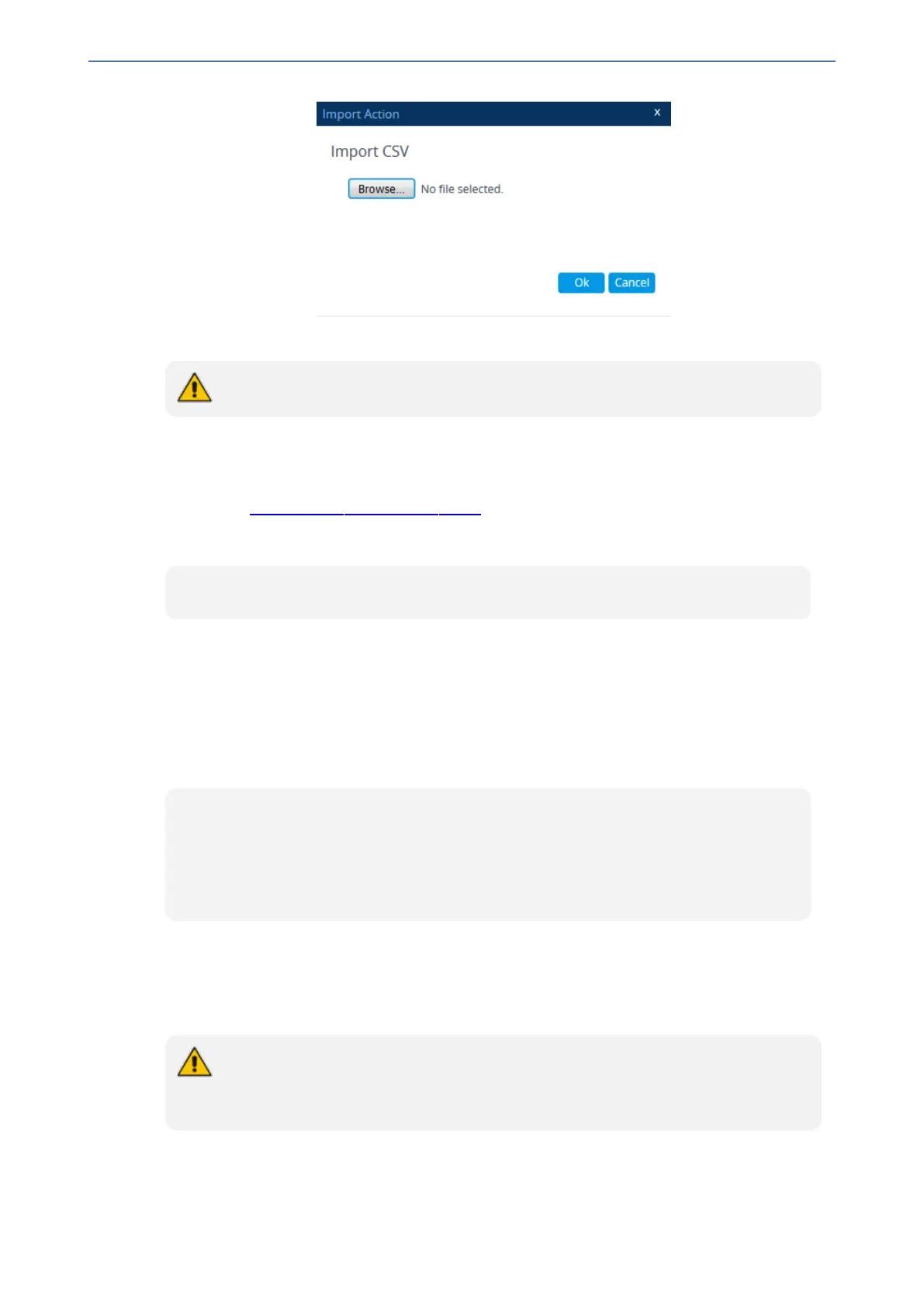CHAPTER20 SIP Definitions
Mediant 1000 Gateway & E-SBC | User's Manual
4. Use the Browse button to select the Dial Plan file on your PC, and then click OK.
The rules in the imported file replace all existing rules of the specific Dial Plan.
Creating Dial Plan Files
You can configure Dial Plans in an external file (*.csv) and then import them into the device, as
described in Importing and Exporting Dial Plans. You can create the file using any text-based editor
such as Notepad or Microsoft Excel. The file must be saved with the *.csv file name extension.
To configure Dial Plans in a file, use the following syntax:
DialPlanName,Name,Prefix,Tag
Where:
■ DialPlanName: Name of the Dial Plan.
■ Name: Name of the dial plan rule belonging to the Dial Plan.
■ Prefix: Source or destination number prefix.
■ Tag: Result of the user categorization and can be used as matching characteristics for routing
and outbound manipulation
For example:
DialPlanName,Name,Prefix,Tag
PLAN1,rule_100,5511361xx,A
PLAN1,rule_101,551136184[4000-9999]#,B
MyDialPlan,My_rule_200,5511361840000#,itsp_1
MyDialPlan,My_rule_201,66666#,itsp_2
Exporting Dial Plans
You can export your configured Dial Plans in comma-separated value (CSV) file format to a folder
on the local PC running the Web client.
The CLI lets you export Dial Plans and Dial Plan rules to a remote server, using the
export-csv-to command under (config-voip)# sbc dial-plan. For more
information, refer to the CLI Reference Guide.
➢ To export all configured Dial Plans with their corresponding Dial Plan rules:
1. Open the Dial Plan table.
- 499 -

